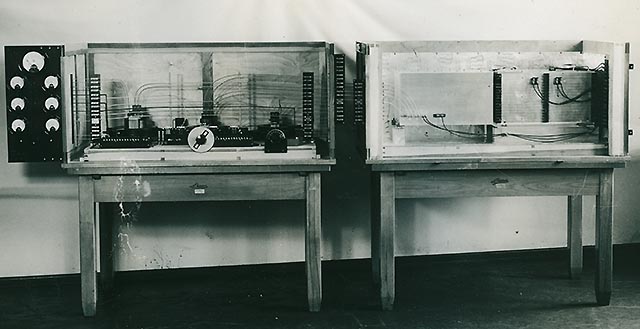
Quartz Clocks – Obtaining Time out of the Blue
Quartz clocks used the self-oscillations of a crystal to keep time. The far higher frequency, compared with that of mechanical watches, enables considerably greater precision. The counter in
a quartz clock does not consist of toothed wheels but rather electronic components.
The development of precision pendulum clocks reached an end around 1930 with the free swung pendulum by Max Schuler. Already in 1928 William Marrison built the first quartz clock. Nearly simultaneously, Adolf Scheibe and Udo Adelsberger of the Physikalisch-Technische Reichsanstalt Berlin developed the first German quartz clocks.
Thanks to the precision of their clocks, in 1934 Scheibe and Adelsberger discovered that the earth does not rotate uniformly. This discovery revolutionized time-keeping. Quartz clocks measured time more precisely than did the astronomers. From now on, time would no longer be read from the stars but would be kept in an apparatus created by man instead.
In 1938, Lothar Rohde, an engineer from Munich, was able to downsize the enormous clocks so that they had the volume of a banana box. Initially, the expensive quartz clocks were used in industry and science.